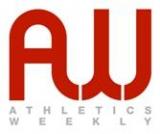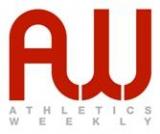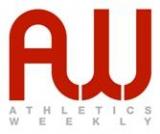Folders |
Sports science: Walk this wayPublished by
The ground-reaction forces of world-class race walkers has been recently studied by sports scientistsRecent research published by sports scientists at Leeds Beckett University has analysed the ground-reaction force of world-class race walkers. The study, undertaken by Dr Brian Hanley and Dr Athanassios Bissas from the Carnegie Faculty at Leeds Beckett and published in the European Journal of Sports Sciences, analysed 19 world-class race walkers from 10 different nations and found that the athletes were able to move with great efficiency despite the abnormal knee movement required by the rules of this Olympic event. Dr Hanley, senior lecturer in sport and exercise biomechanics at Leeds Beckett, explained: Ground-reaction force is the force exerted by the ground on a body in contact with it. The purpose of this study was to analyse ground reaction forces of world-class race walkers to aid coaches in identifying the importance of elements of high-quality race walking that normally are unavailable to them, such as braking and propulsive forces.” The athletes involved in the study were analysed when walking along a 45-metre indoor track and across two large force plates in the university s biomechanics laboratory, as well as being filmed using advanced high-speed videography. Race walkers exhibit an abnormal gait dictated by a rule that states that no visible (to the human eye) loss of contact with the ground should occur and that the leg must be straightened from first contact with the ground until the vertical upright position”. The consequential absence of knee flexion during early and mid-stance in race walking does not occur in normal walking and prior research on world-class race walkers by Dr Hanley has found that race walkers knees are in fact hyperextended during midstance. This new research has shown that this abnormal knee movement results in considerable effects on ground reaction force (GRF) patterns that affect other gait variables. Dr Hanley explains: As an endurance event, it is crucial that the athlete can maintain a fast but submaximal speed that wastes as little energy as possible. This is why it was so valuable to use force plates as they give us very detailed and accurate measurements of how much athletes are speeding up or slowing down during each individual step. We can then use this information to address any technical weaknesses the athlete might have.” The results of this study have many other practical implications for race walkers and their coaches. First, the knee s abnormal movement seemed to restrict upwards propulsion at toe-off that might help prevent visible flight times, and therefore good technique is a key priority. Second, placing the foot ahead of the body need not be overly detrimental with regard to braking forces as has often been believed, provided its length is about 20% of stature. In addition, a narrow stride width, where the athlete walks in a very straight line, is advantageous to the athlete. However, it also demonstrates the need for appropriate training of pelvis-stabilising muscles such as the gluteus medius. As endurance athletes, it is important for race walkers to reduce overall movement inefficiency and the slight flattening of the vertical GRF pattern that occurred (and is different from normal walking) might be an attempt to reduce vertical movement and conserve energy. The flatter vertical GRF trace was also beneficial in reducing fluctuations in velocity during stance. This was particularly important as athletes who experienced larger fluctuations also had longer contact times and thus had lower stride frequencies. Dr Brian Hanley is a senior lecturer in sport and exercise biomechanics at Leeds Beckett University and a level-2 endurance coach The post Sports science: Walk this way appeared first on Athletics Weekly. Read the full article at: www.athleticsweekly.com
More news |






